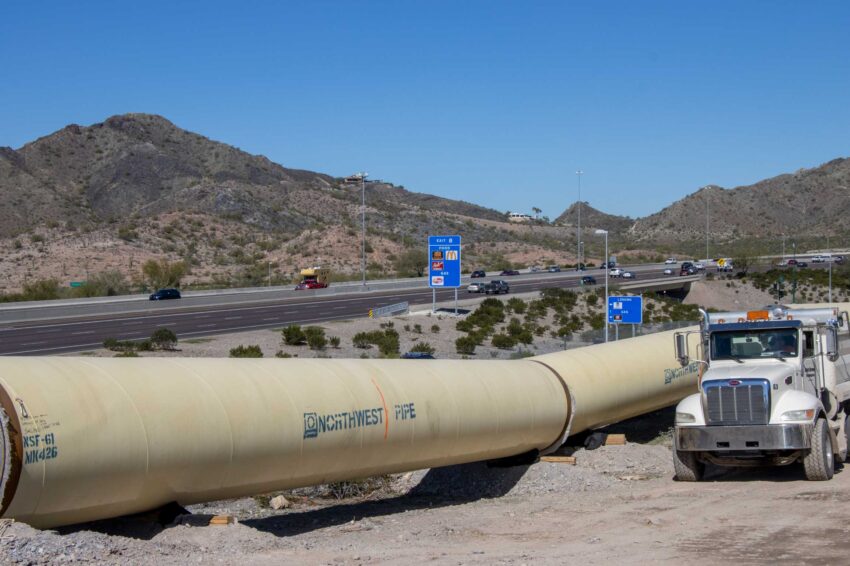Phoenix asks customers to make small changes for big water savings
In the midst of a water alert due to supply limitations on the Colorado River, the City of Phoenix is asking residents to do their part to voluntarily reduce water use at home in ways that will minimally impact their lifestyles.
Nearly 60 percent of the city’s water is supplied by the Salt and Verde Rivers, and the remaining 40 percent comes from the Colorado River, where two major reservoirs—Lake Mead and Lake Powell—are at historically low levels and are estimated to continue dropping.
In a series of town hall meetings over the past month, city water officials gathered with residents to discuss its water management plans due to the water shortage, along with suggestions for voluntary water conservation.
The driving force behind the drought is temperature, not precipitation, explained Cynthia Campbell, Phoenix City water resources management advisor. Despite climate change, Campbell said the city has been storing Colorado River underground for many years and has more water available than the three rivers supply, should the need to tap in arise.
“Our water portfolio is actually bigger than what we use in a given year. For about the last 70 years, the city has been carefully cultivating and amassing a water portfolio that will take us through any kind of cycle of drought,” Campbell said.
The city began its conservation efforts in 1980 and has yet to enact mandates on water use. And, there’s been a growing shift in how residents are choosing more drought-tolerant plants and incorporating less grass into their landscape. The city has seen a 30 percent reduction in residential water use over the last 20 years, according to data in its Drought Management Plan.
Small Changes, Big Impact
Small, non-costly changes at home can result in significant conservation gains if conscious efforts are made, water officials say.
“You don’t need to spend thousands of dollars and hours and hours of your time to be able to make meaningful contributions to conservation,” said Max Wilson, Phoenix City water conservation coordinator.
1. Water outdoors no more than twice a week. An average of 70 percent of water use comes from outdoor use, and the city suggests watering deeply and slowly for plants, and to water at night to avoid evaporation. In the summer, start with watering grass once every three days and adjust accordingly. Find irrigation suggested guidelines at www.phoenix.gov/watercloud.
2. Check for leaks at least four times a year. Check faucets and shower heads regularly, and run through your outdoor irrigation settings and cycles to keep an eye out for leaks.
3. Commit to efficient appliances and fixtures. When it’s time to replace your appliances and fixtures, look for the EPA WaterSense label and EnergyStar label.
Goals and Infrastructure Improvements
Phoenix has set a goal to reduce consumption 10 percent by 2030. In October, the city began mailing quarterly water usage reports to residents so homeowners can compare water use with their neighbors.
A $300-million pipeline to get Salt River water and groundwater to North Phoenix and other parts of the city that currently rely on Colorado River water has been completed and anticipated to be operational in 2023. This project is being funded by the 2019 rate increase to Phoenix water customers.
Future solutions may also include recycling water, according to the city.
Water officials have also suggested that a rate increase may be proposed in 2023 to ensure reliable service for future operations and infrastructure.
More Ways to Save
- Adjust irrigation controllers monthly based on plant watering needs.Text WHENTOWATER to 33222 for monthly suggestions and reminders from the city on how to water your landscape.
Info www.amwua.info/watering to research watering suggestions.
- Landscape with plants that require less water, and replace grass with turf.
Info www.amwua.org/plants to research drought-tolerant plants.
3. Install smart devices like irrigation controllers and smart leak detectors.
And look for the EPA’s WaterSense label.
4. Calculate the optimal amount of water to use in your home at www.phoenix.gov/waterservices/usage-calculator.

